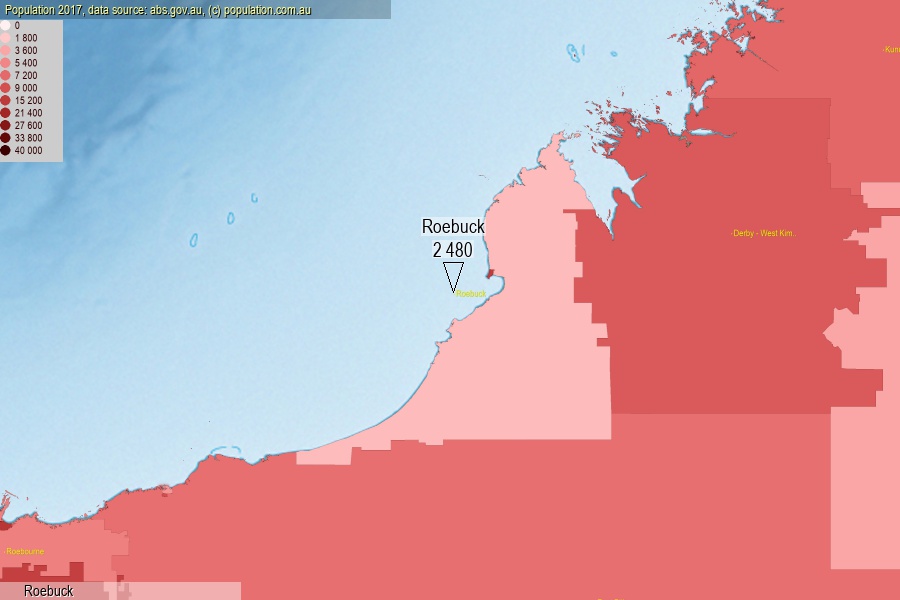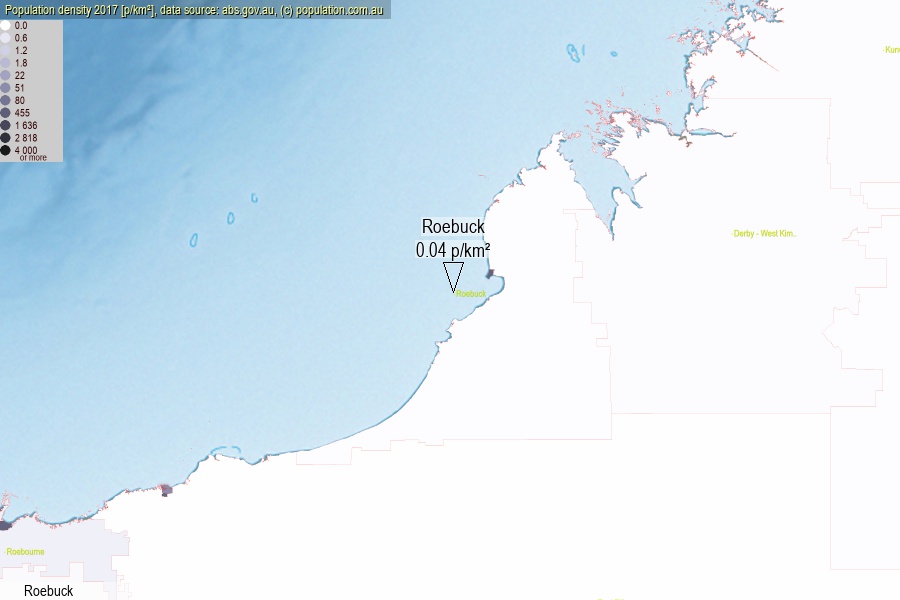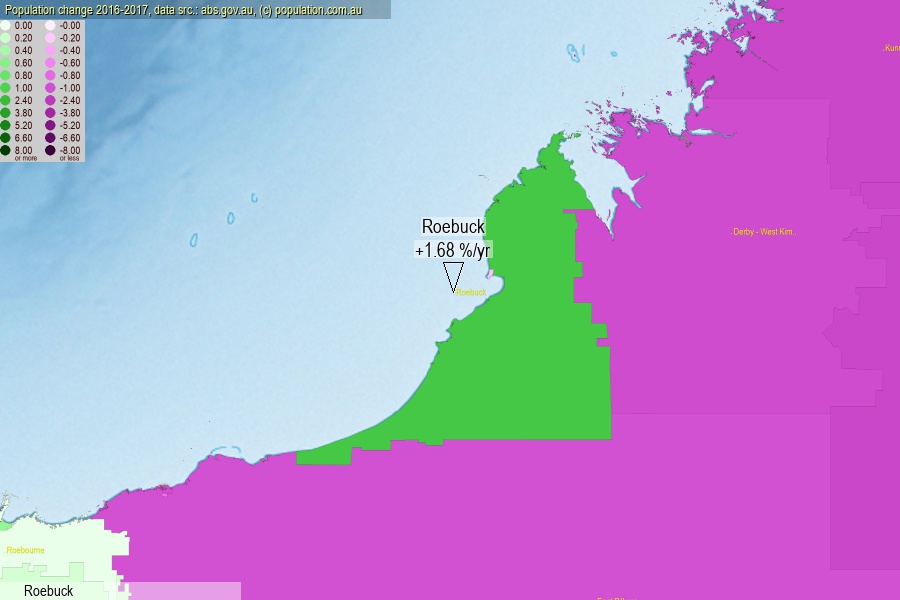 population.com.au
population.com.auLast official estimated population of Roebuck (as Statistical Area Level 2) was 2 480 people (on 2017-06-30)[2]. This was 0.01% of total Australian population and 0.096% of WA population. Area of Roebuck is 55 343.50 km², in this year population density was 0.04 p/km² . If population growth rate would be same as in period 2016-2017 (+1.68%/yr), Roebuck population in 2025 would be 2 834. [0]



Click to enlarge. Roebuck is located in the center of the images.
Population [people], population density [p./km²] and population change [%/year] [2]
View borders » (new window) [4]
[2001-2002] -1.28 %/Yr.
[2002-2003] -0.89 %/Yr.
[2003-2004] -1.58 %/Yr.
[2004-2005] -1.37 %/Yr.
[2005-2006] -0.70 %/Yr.
[2006-2007] +1.73 %/Yr.
[2007-2008] +3.26 %/Yr.
[2008-2009] +3.69 %/Yr.
[2009-2010] +1.29 %/Yr.
[2010-2011] +2.63 %/Yr.
[2011-2012] +1.69 %/Yr.
[2012-2013] +1.18 %/Yr.
[2013-2014] -0.60 %/Yr.
[2014-2015] -0.56 %/Yr.
[2015-2016] -1.01 %/Yr.
[2016-2017] +1.68 %/Yr.
[0] Calculated with linear interpolation from officially estimated population
[1] Read more about SA2 and Australian Statistical Geography Standard (ASGS) on abs.gov.au
[2] Population data from Australian Bureau of Statistics (Population and density: 2017; change: 2016-2017)
[3] Digital Boundaries: Australian Statistical Geography Standard (ASGS) 2016.
[4] Border coordinates are simplifyed using Ramer-Douglas-Peucker algorithm.